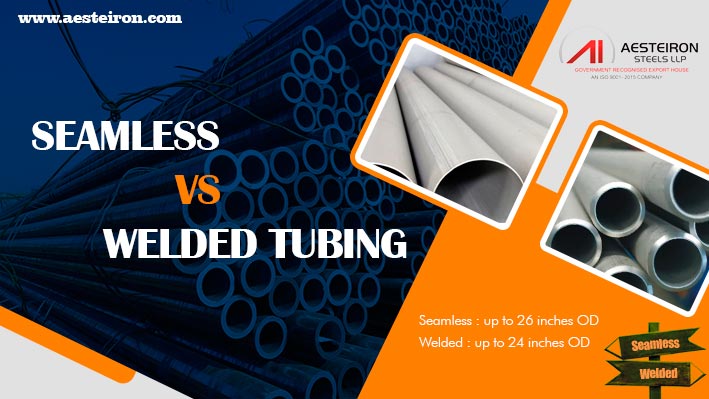
When it comes to choosing between different types of tubing, several factors must be considered. This guide will help you understand the differences between welded and seamless tubing, making it easier for you to select the right option for your needs.
Table of contents
- What is Seamless Tube
- What is Welded Tubes
- Pressure Capacity of Seamless And Welded Tubing
- Seamless vs Welded Tubing
- Difference Between ERW and Seamless Tube Price
- Advantages and Disadvantages of seamless and welded tube
- Seamless Tubing Sizes
- Seamless Steel Tubes Manufacturing Process
- Welded Steel Tube Manufacturing Process
- Seamless Tubing vs DOM Tubing
- Seamless Steel Tube Uses
- Application for Welded Round Tubing
- Mechanical Properties of ERW vs Seamless Tube
- Finish for Welded and Seamless Tubes
- Seamless Tube Weight Chart
- SMLS Tube Extrusion Process
- Welded Tube Types
Seamless tubes can handle higher pressure than welded tubing
One of the main advantages of seamless tubes is that they have no weld seam, which eliminates a potential weak point. As a result, seamless tubes are typically stronger and more suitable for high-pressure applications. Below, you'll find detailed information on the pressure ratings of both types of tubes.
Pressure Capacity of Seamless And Welded Tubing
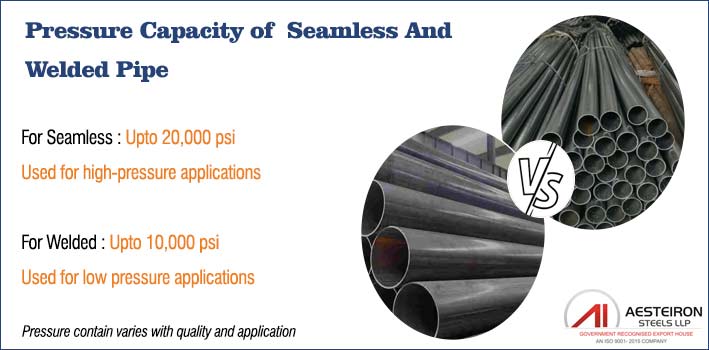
Welded tubes often have larger diameters and thinner walls
This makes them ideal for architectural and construction projects where precise dimensions are required. Since they can be manufactured more quickly, welded tubes are also easier to customize for specific applications. You can achieve larger diameters and thinner walls with this type of tubing.
Seamless vs Welded Tubing
| Description | Seamless Tubing | Welded Tubing |
|---|---|---|
| Manufacturing Process | Seamless tubes are made from solid billets that are heated and extruded into a tube without any weld seams. | Formed from metal strips that are rolled and welded along the length. |
| Length | Shorter in length | Long continuous lengths |
| Strength | Stronger | Lower compared to seamless |
| Uniformity | More uniform wall thickness | Wall thickness may vary slightly |
| Applications | Used for high-pressure applications and critical structural components. | Commonly used in less critical applications |
| Corrosion Resistance | More corrosion-resistant. | Less corrosion resistance. |
| Cost | More expensive | Less expensive |
| Manufacturing Flexibility | Less flexible | More flexible |
| Surface Quality | Rough because of extrusion process | Smooth high-quality surface |
| Surface Finish | Smoother finish and few surface defects. | Surface finish can be less consistent due to the welding process |
| Ovality | Provide better ovality and roundness | Â Poor ovality and roundness |
| Inspection & Testing | Requires more rigorous testing to ensure quality and strength. | May require less rigorous testing |
| Internal surface check | Not possible | Checked before manufacturing |
| Size Range | Available in a more limited range of sizes than welded tubing. | Can be produced in a large range of sizes and lengths. |
Welded tubing is generally less expensive than seamless tubing
Because welded tubes can be manufactured quickly, they are more adaptable and cost-effective compared to seamless pipes. This means more welded tubes can be produced in a shorter time, reducing labor costs. They are ideal for industries that require low or medium pressure applications.
Difference Between ERW and Seamless Tube Price
| Seamless Tube | ERW Steel Tube |
|---|---|
| More expensive : can be 1.5 to 3 times the cost of welded tubes | Less expensive : more affordable by 30% to 60% compared to seamless tubes |
| Factor affecting : Manufacturing Process, Quality, Production Costs, Demand | |
Advantages and Disadvantages of seamless and welded tube
The Pros and Cons of Hot Finished Seamless Type Tubes
| Pros | Cons |
|---|---|
| Excellent corrosion resistance | Expensive |
| Good Durability | Difficult to manufacture |
| High pressure rating | Not ideal for thin wall large diameter tubes |
| Good Purity | Longer lead times |
| Ideal for critical applications | Â |
The Pros and Cons of Welded Tubes
| Pros | Cons |
|---|---|
| Better lead times | Suitable for Heavy wall applications |
| Less Expensive | Less corrosion resistant |
| Available in long lengths | Slight impurities |
| Thinner wall | Stress concentration |
| More consistent concentricity | Â |
| Tighter tolerances | Â |
Seamless Tubing Sizes
| NPS | Schedule | DN | OD | Wall thck | Weight |
|---|---|---|---|---|---|
| [inch] | [inch] | [lbs/ft] | |||
| 1/8 | 10 | 6 | .405 | .049 | .19 |
| Â | 40 | Â | Â | .068 | .24 |
| Â | 80 | Â | Â | .095 | .31 |
| 1/4 | 10 | 8 | .54 | .065 | .33 |
| Â | 40 | Â | Â | .088 | .42 |
| Â | 80 | Â | Â | .119 | .54 |
| 3/8 | 10 | 10 | .675 | .065 | .42 |
| Â | 40 | Â | Â | .091 | .57 |
| Â | 80 | Â | Â | .126 | .74 |
| 1/2 | 5 | 15 | .84 | .065 | .54 |
| Â | 30 | Â | Â | .095 | .76 |
| Â | 40 | Â | Â | .109 | .85 |
| Â | 160 | Â | Â | .188 | 1.31 |
| 3/4 | 5 | 20 | 1.05 | .065 | .69 |
| Â | 30 | Â | Â | .095 | .97 |
| Â | 80 | Â | Â | .154 | 1.47 |
| Â | 160 | Â | Â | .219 | 1.94 |
| 1 | 5 | 25 | 1.315 | .065 | .87 |
| Â | 10 | Â | Â | .109 | 1.41 |
| Â | 40 | Â | Â | .133 | 1.68 |
| Â | 160 | Â | Â | .25 | 2.84 |
| 1 1/4 | 5 | 32 | 1.66 | .065 | 1.11 |
| Â | 30 | Â | Â | .117 | 1.93 |
| Â | 80 | Â | Â | .191 | 3 |
| Â | 160 | Â | Â | .25 | 3.76 |
| 1 1/2 | 5 | 40 | 1.9 | .065 | 1.28 |
| Â | 10 | Â | Â | .109 | 2.09 |
| Â | 40 | Â | Â | .145 | 2.72 |
| Â | 80 | Â | Â | .2 | 3.63 |
| Â | 160 | Â | Â | .281 | 4.86 |
| 2 | 5 | 50 | 2.375 | .065 | 1.61 |
| Â | Â | Â | Â | .109 | 2.64 |
| Â | Â | Â | Â | .141 | 3.36 |
| Â | 40 | Â | Â | .154 | 3.65 |
| Â | Â | Â | Â | .188 | 4.39 |
| Â | 80 | Â | Â | .218 | 5.02 |
| Â | Â | Â | Â | .281 | 6.28 |
| Â | 160 | Â | Â | .344 | 7.46 |
| 2 1/2 | 5 | 65 | 2.875 | .038 | 2.47 |
| Â | 10 | Â | Â | .12 | 3,53 |
| Â | Â | Â | Â | .125 | 3.67 |
| Â | Â | Â | Â | .156 | 4.53 |
| Â | Â | Â | Â | .188 | 5.4 |
| Â | 40 | Â | Â | .203 | 5.79 |
| Â | 80 | Â | Â | .276 | 7.66 |
| Â | 160 | Â | Â | .375 | 1 .01 |
| 3 | Â | 80 | 3.5 | .083 | 3.03 |
| Â | 10 | Â | Â | .12 | 4,34 |
| Â | Â | Â | Â | .141 | 5.06 |
| Â | Â | Â | Â | .172 | 6.11 |
| Â | 40 | Â | Â | .216 | 7.58 |
| Â | Â | Â | Â | .281 | 9.66 |
| Â | 80 | Â | Â | .3 | 1 .25 |
| Â | 160 | Â | Â | .438 | 14.32 |
| 3 1/2 | 5 | 90 | 4 | .083 | 3.48 |
| Â | 10 | Â | Â | .12 | 4.98 |
| Â | Â | Â | Â | .141 | 5.81 |
| Â | Â | Â | Â | .172 | 7.03 |
| Â | 40 | Â | Â | .226 | 9.11 |
| Â | Â | Â | Â | .281 | 11.16 |
| Â | 80 | Â | Â | .318 | 12.5 |
| 4 | 5 | 100 | 4.5 | .083 | 3.92 |
| Â | 10 | Â | Â | .12 | 5.62 |
| Â | Â | Â | Â | .141 | 6.56 |
| Â | Â | Â | Â | .172 | 7.95 |
| Â | Â | Â | Â | .203 | 9.32 |
| Â | 40 | Â | Â | .237 | 1 .79 |
| Â | Â | Â | Â | .281 | 12.66 |
| Â | 80 | Â | Â | .337 | 14.98 |
| Â | 160 | Â | Â | .531 | 22.51 |
Seamless steel tube is extruded and drawn from a billet while welded tube is manufactured from a strip
The difference between the two tubes lies in their manufacturing processes. Seamless tubes do not have any weld seams, which gives them higher strength, making them suitable for high-pressure conditions. On the other hand, welded tubes have welds, which make them less strong and more appropriate for applications with medium to low pressure conditions.
Seamless Steel Tubes Manufacturing Process
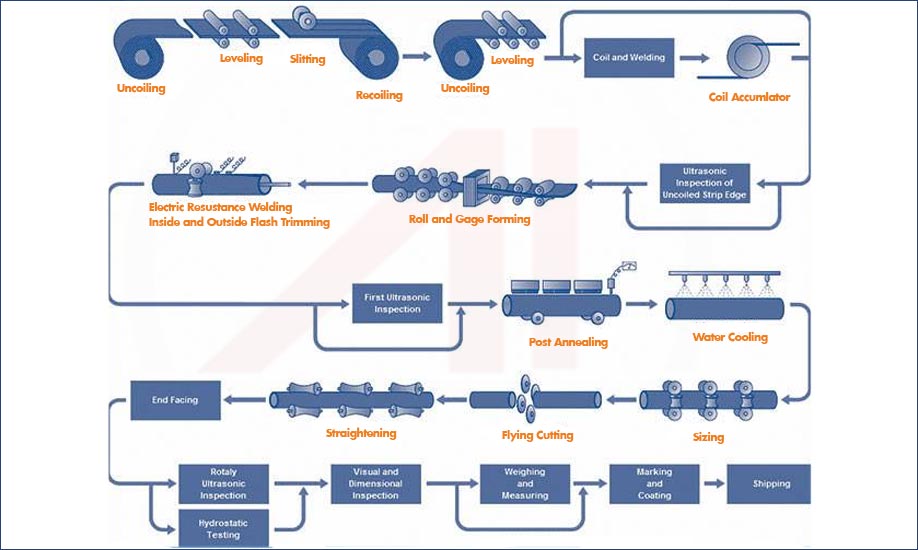
Welded Steel Tube Manufacturing Process
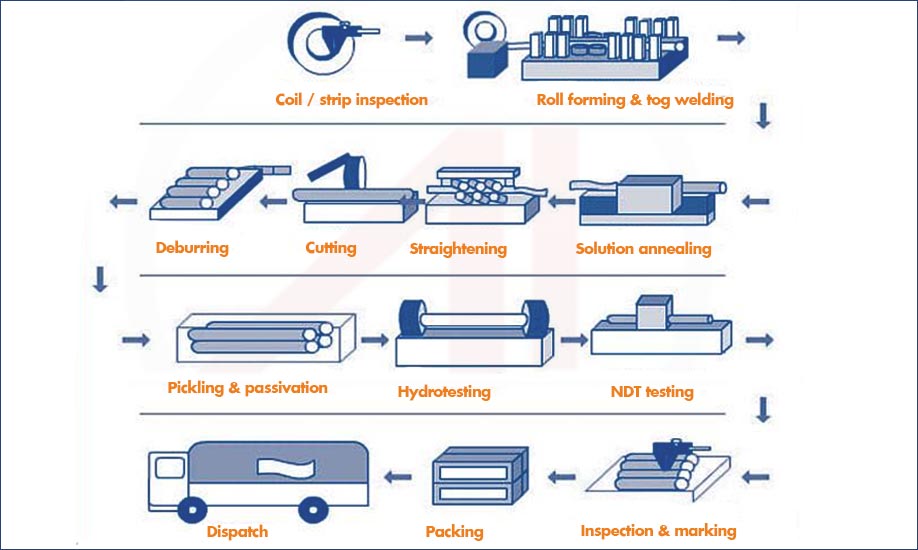
Seamless Tubing vs DOM Tubing
| Description | Seamless Tube | DOM Tubing |
|---|---|---|
| Manufacturing Process | Made from a solid billet | Starts as a welded tube, then drawn over a mandrel |
| Advantages | High strength and durability | Good dimensional accuracy |
| Strength | Higher | Improved strength compared to standard welded tubes, but not as stronger than seamless tubing |
| Weld Seams | No weld seams | Originally welded, but weld seam is removed during the mandrel process |
| Dimensional Accuracy | High | Very high |
| Surface Finish | Varies | smooth and uniform after mandrel drawing |
| Cost | More | Less |
Seamless Steel Tube Uses
- Aerospace
- Oil and gas
- Structural components in demanding environments
- High-pressure hydraulic systems
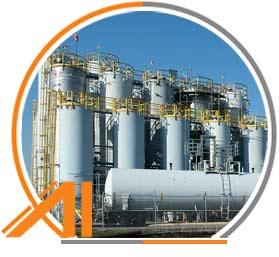
Seamless annealed tubing is more expensive than welded round tubing
Seamless annealed tubing undergoes several processes that increase its cost, as the production takes longer and involves more labor, machining, and related expenses. This makes it more costly compared to welded tubing.
Application for Welded Round Tubing
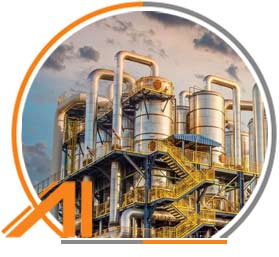
- General structural applications
- Piping and tubing in less demanding environments
- Automotive components
- Furniture and general manufacturing
Mechanical Properties of ERW vs Seamless Tube
| Property | Seamless Tubes | ERW Steel Tubes |
|---|---|---|
| Tensile Strength | Higher than welded | Lower than seamless |
| Yield Strength | Consistent across the entire tube | May vary |
| Elongation | Better | Can be reduced at the weld seam and heat-affected zones – HAZ |
| Impact Toughness | Higher | Lower |
| Fatigue Resistance | Higher | Lower |
| Hardness | Typically more consistent throughout the tube. | Show variation |
| Weld Integrity | N/A | Quality of the weld can impact overall mechanical properties |
Finish for Welded and Seamless Tubes
Seamless tubing
- Cold Drawn Finish
- Hot Finished
- Polishing
- Passivation
- Coating
Welded tubing
- Heat Treatment
- Descaling
- Polishing
- Coating
- Anodizing
Seamless Tube Weight Chart
| Nominal Tube Size | inch | 1/8 | 1/4 | 3/8 | 1/2 | 3/4 | 1 | 1.1/4 | 1.1/2 | 2 | 2.1/2 | 3 | 4 | 5 | 6 | 8 | 10 | 12 |
|---|---|---|---|---|---|---|---|---|---|---|---|---|---|---|---|---|---|---|
| mm | 3 | 6 | 10 | 15 | 20 | 25 | 32 | 40 | 50 | 65 | 80 | 100 | 125 | 150 | 200 | 250 | 300 | |
| Outside Diameter | mm | 10.3 | 13.7 | 17.1 | 21.3 | 26.7 | 33.4 | 42.2 | 48.3 | 60.3 | 73 | 88.9 | 114.3 | 141.3 | 168.3 | 219.1 | 273.1 | 323.8 |
| Sched 5 S | Weight in kgm | 0.2 | 0.37 | 0.47 | 0.8 | 1.03 | 1.3 | 1.65 | 1.91 | 2.4 | 3.69 | 4.51 | 5.84 | 9.47 | 11.32 | 14.79 | 22.63 | 31.25 |
| WT in mm | 1.2 | 1.2 | 1.2 | 1.65 | 1.65 | 1.65 | 1.65 | 1.65 | 1.65 | 2.11 | 2.11 | 2.11 | 2.77 | 2.77 | 2.77 | 3.4 | 3.96 | |
| Sched 10 S | Weight in kgm | 0.28 | 0.49 | 0.63 | 1 | 1.28 | 2.09 | 2.7 | 3.11 | 3.93 | 5.26 | 6.45 | 8.36 | 11.57 | 13.84 | 19.96 | 27.78 | 36 |
| WT in mm | 1.24 | 1.65 | 1.65 | 2.11 | 2.11 | 2.77 | 2.77 | 2.77 | 2.77 | 3.05 | 3.05 | 3.05 | 3.4 | 3.4 | 3.76 | 4.19 | 4.57 | |
| Sched 20 S | Weight in kgm | 0.33 | 0.58 | 0.74 | 1.07 | 1.52 | 1.94 | 2.9 | 3.55 | 4.24 | 6.81 | 8.37 | 12.18 | 16.8 | 25.36 | 33.31 | 41.77 | 49.7 |
| WT in mm | 1.5 | 2 | 2 | 2.3 | 2.55 | 2.55 | 3 | 3 | 3 | 4 | 4 | 4.5 | 5 | 6.35 |
